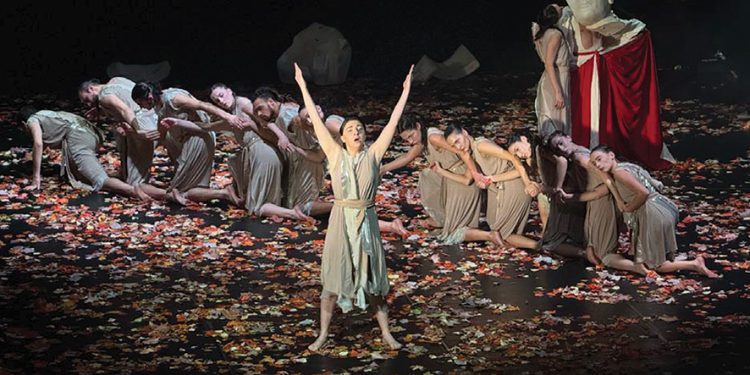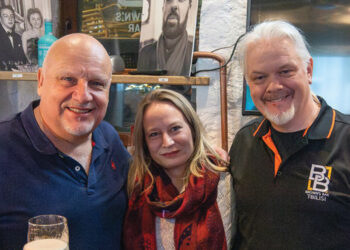In a performance that electrified the Marjanishvili Theater on November 19, Tato Geliashvili and Tata Tavdishvili unveiled their choreographic adaptation of Imre Madách’s Tragedy of Man. This visionary production, blending fluid movement, minimalist design, and a haunting original score by Michél, reimagines the epic philosophical drama as an immersive exploration of humanity’s timeless questions: Why do we exist? How do we endure? And can hope prevail amidst eternal struggle?
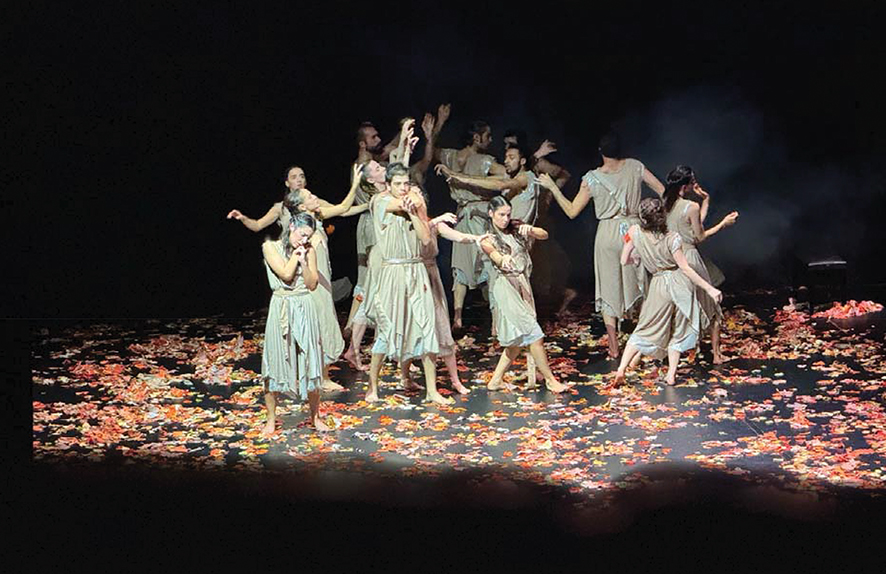
From Madách’s Words to a Symphony of Motion
Imre Madách’s 19th-century masterpiece is a sprawling exploration of humanity’s journey through history, guided by the devilish yet enlightening Lucifer. Geliashvili and Tavdishvili abandon Madách’s rich verbal tapestry, replacing it with an expressive choreographic language. In this version, movement becomes the medium for wrestling with humanity’s grand questions, turning the stage into a physical and emotional battleground.
Through ensemble sequences and intimate solos, the performers conveyed an existential journey that was at once deeply personal and strikingly universal. Each gesture, pause, and breath seemed laden with meaning, transforming the original text into a visual and emotional symphony.
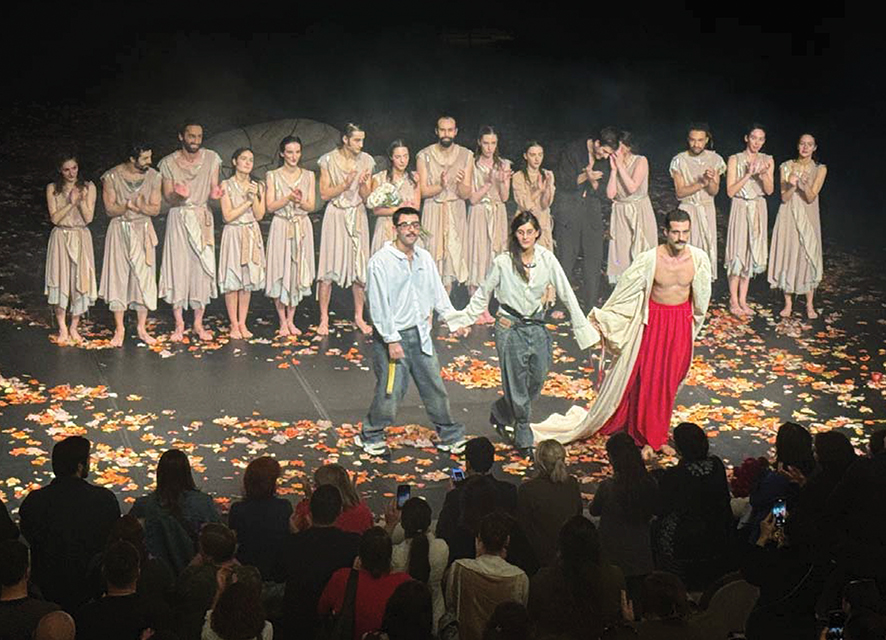
Temptation Takes Center Stage
At the heart of Tragedy of Man is the provocative idea of temptation—not as a moral failing, but as a gateway to self-discovery. The character of Lucifer, subtly embodied through sinuous and predatory choreography, became both a tormentor and a guide. The captivating performances of the soloists vividly depicted the complex interplay of resistance, surrender, and enlightenment that temptation entails.
Through ensemble sequences and intimate solos, the performers conveyed an existential journey that was at once deeply personal and strikingly universal
In their hands, the concept of temptation was stripped of its binary connotations of good versus evil. Instead, it emerged as a force of duality, one that both challenges and refines humanity’s understanding of its purpose.
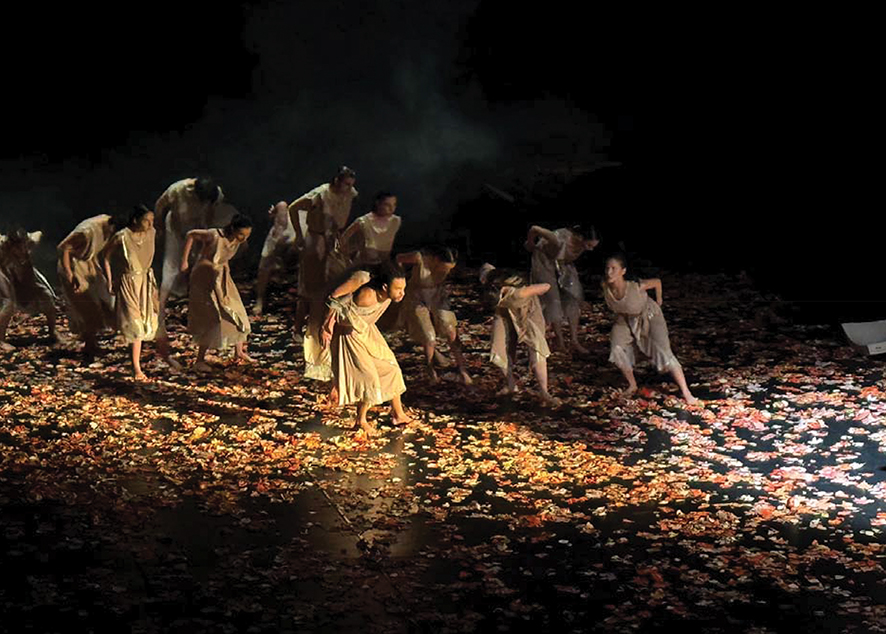
An Abstract Odyssey: Set, Costumes, and Symbols
The production’s visual design was a triumph of abstraction. Geliashvili and Tavdishvili, doubling as set and costume designers, created a minimalist stage punctuated by evocative chaotic defoliation and shifting lightscapes. This stripped-down aesthetic allowed the performers’ movements to dominate, while the symbols hinted at deeper metaphysical themes.
Costumes blurred historical and contemporary influences, making the characters feel timeless yet immediate. The performers seemed to exist in a liminal space, their attire suggesting both primordial origins and futuristic possibilities.

Soundscapes of Struggle and Hope
Michél’s original score provided a haunting and atmospheric backbone to the performance. Pulsing rhythms mirrored the performers’ movements, while swelling crescendos amplified moments of collective tension. The music wasn’t merely an accompaniment; it was a co-creator of the performance, binding the choreography and set design into a cohesive emotional journey.
Notably, Michél incorporated moments of stark silence, allowing the performers’ movements to resonate even more profoundly. These pauses felt like metaphysical gulfs, inviting the audience to reflect on the nature of struggle and the fleeting clarity of hope.

Performers Who Embody the Human Spirit
The ensemble cast delivered a collective performance that was both dynamic and deeply cohesive. Each dancer brought their own layer of nuance, reflecting the diversity of the human experience while maintaining the unity of the overarching narrative.
Standout moments, which captured the fragility of human hope, and anchored the ensemble in scenes of collective chaos was a depiction of interdependence and tension that seemed to encapsulate humanity’s perpetual dance between connection and isolation.
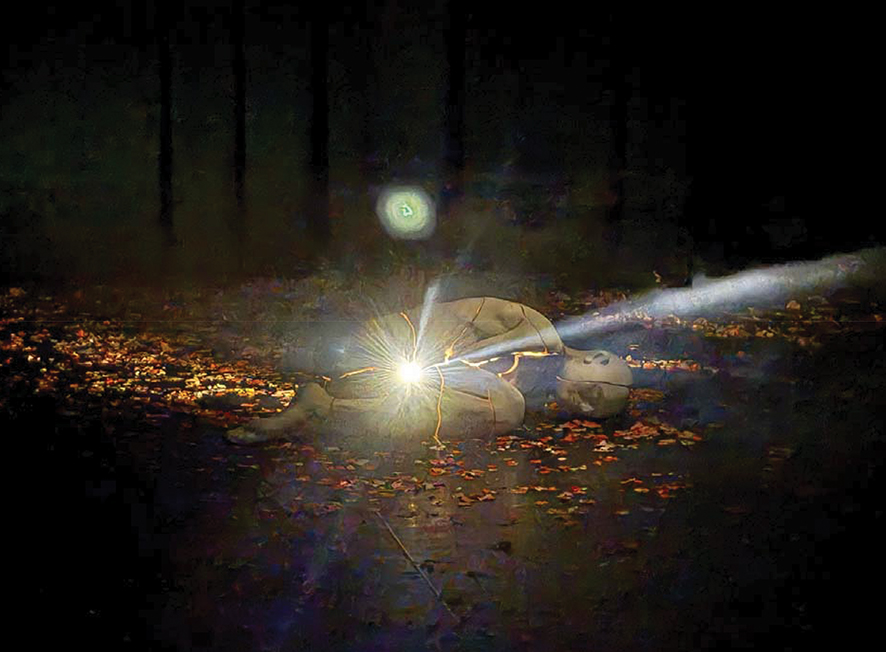
Universal Themes, Personal Questions
Tragedy of Man transcended its origins as a philosophical text to become an experience of universal resonance. By replacing traditional narrative structure with abstract, symbolic movement, the production invited the audience to project their own questions and fears onto the stage. What does it mean to hope in the face of despair? How do we make sense of our struggles when the answers remain elusive? These questions lingered long after the final curtain, a testament to the production’s emotional and intellectual power.
In this bold reinterpretation, Tragedy of Man became more than a theatrical performance: it was a meditation on existence, a mirror held up to the audience’s own inner struggles. By daring to strip away conventional storytelling and embrace abstraction, Geliashvili and Tavdishvili created a production that was both deeply personal and profoundly universal.
By Ivan Nechaev

